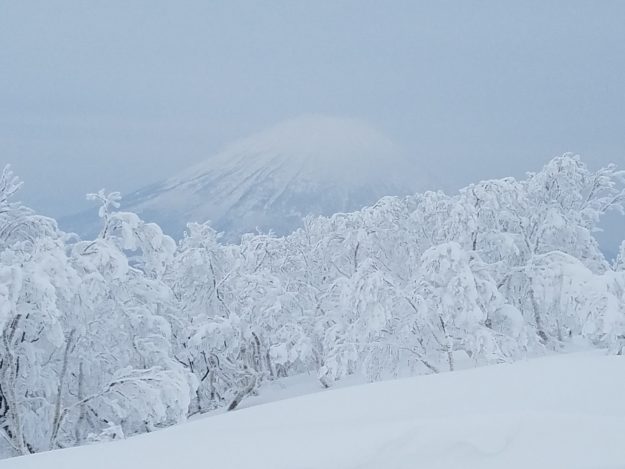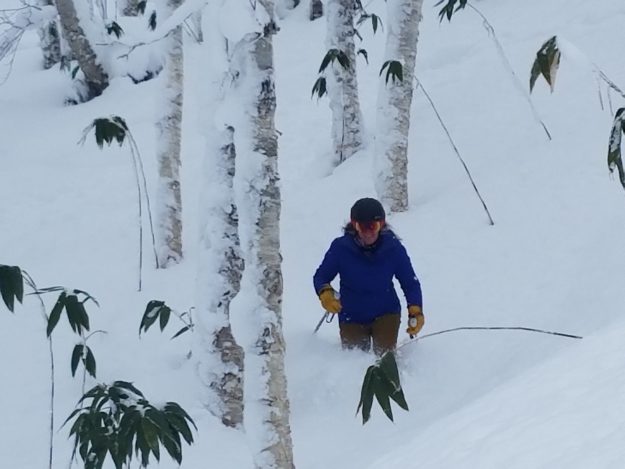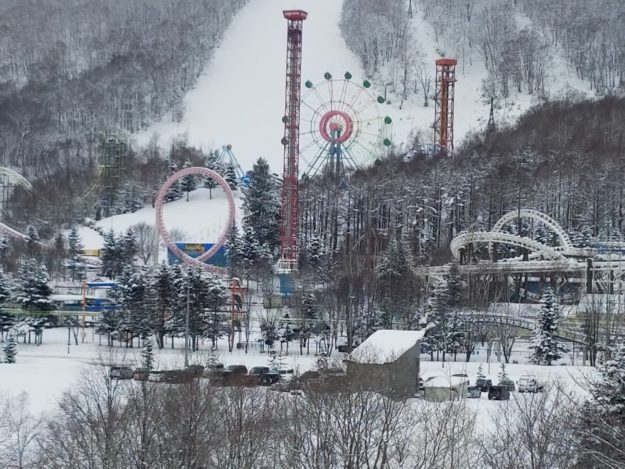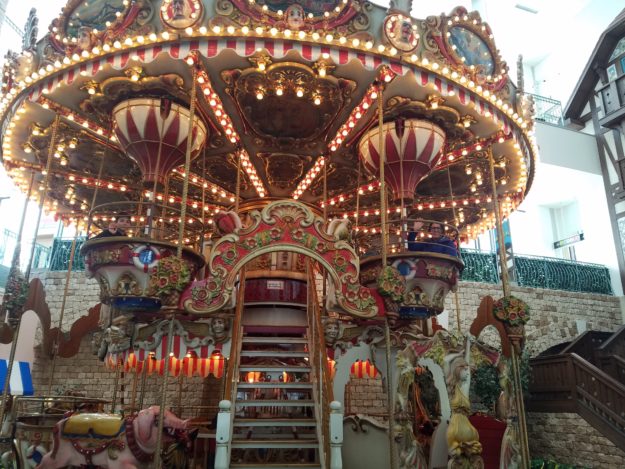Widgetized Section
Go to Admin » Appearance » Widgets » and move Gabfire Widget: Social into that MastheadOverlay zone
Rusutsu really is epic, both as a powder magnet and tree-skiing Mecca

Having viewed my share of Japanese ski-porn films in recent years, I had a couple of preconceived notions about skiing there. First, it’s almost impossible to get shut out on the powder front, because it snows all the time, and second, the tree skiing is the best in the world.
Both of those things were pretty key for me as we planned our recent Japanese holiday ski adventure. You don’t want to fly 5,800 miles to ski groomers, and we have some pretty decent tree skiing right here in Colorado. In fact, ducking into the trees has become more and more of a necessity in the Epic Pass era with open-slope powder getting tracked out quicker and quicker in increasingly popular Colorado.
Turns out both of my notions about Japan were on the money. After a couple of fun-filled nights in Tokyo, we jumped an ANA (All Nippon Airways) flight from Tokyo’s Haneda Airport to New Chitose Airport near Sapporo on the north island of Hokkaido. Sapporo, famous for its beer, sake and hosting the 1972 Winter Olympics, seemed cool, but we were quickly on a bus to Rusutsu.
New this season to Vail Resorts’ Epic Pass with five consecutive days of snow riding, Rusutsu Resort is near the more famous destination of Niseko, which is on Alterra’s Ikon Pass, but Rusutsu is far less renowned and therefore far less crowded – from what I hear. We did not make it to Niseko.
About an hour and a half by bus from Sapporo, Rusutsu sits squarely in the crosshairs of a seemingly endless succession of Siberian Express storms that sweep in from Russia, pick up warm water off the Sea of Japan and deposit all that moisture in the form of “Japow”.
And you’d think, because you’re so close to the coast, that the snow would be wet like Sierra Cement. In fact, the cold coming in from Siberia makes for surprisingly light powder that simultaneously has the more stable traits of coastal snow (i.e., less avalanche-prone).
We left Tokyo at 9:30 a.m. and landed in Sapporo around 11 on Dec. 23. There are a couple of trains that will get you there – the first a Shinkansen bullet train and the second a slower conventional train – but then you still have to get up to Rusutsu. So we passed on that method as it would have consumed an entire day. Instead, we were checked in and renting skis by 4 p.m.
That gave us a taste of Rusutsu’s West End area that same day as the fast-fading afternoon light quickly gave way to night skiing – just in time for a significant storm to roll in. The next day we were out by 9 after a traditional Japanese breakfast that was a bit of a shock to the system.
Fortunately, after a few incredibly deep powder runs on Isola Mountain and Rusutsu’s East End area – connected to the West End hotel area by a quick gondola ride – we were able to locate more palatable ramen bowls and curry dishes in the Steamboat on-mountain dining area (apparently the same Japanese company once also owned Colorado’s Steamboat ski area).

The tree skiing at Rusutsu is about as good as it gets. Very widely dispersed Japanese white birch trees protect the snow and keep most locals from forging off piste. Meanwhile, there are a few signs saying to stay on the trails, but they are not at all enforced, and the only snow riders we encountered were a handful of Aussies and Americans doing endless, almost untouched laps.
Because it was early season, we were thrashing through a fair amount of bamboo – not a problem unless you’re on the shorter side like our youngest son Rennick, who emerged from the trees a few times dragging bamboo chutes and leaves. Here’s a Facebook video link of what it’s like.
A quick note on the skis. We brought our boots, helmets and soft goods and figured we’d be able to rent some decent mid-fats. In fact, Rusutsu had a pretty limited rental selection and we were riding 80-under-foot Salomons (shaped at least but not at all wide). The only plus was it was kind of nice get very deep into the Japow, but in the future I’d heed the advice of those who told us to ship our own fat skis in advance (arguably only a little pricier than renting).
One other logistical note: Be sure to pack a two-prong to three-prong adaptor if you have an old-school PC laptop like mine. I was able to borrow from hotels, but it was a bit of pain. And, in general, the Japanese ski infrastructure seems a bit stuck in the 90s, or 80s even (think Vail pre high-speed detachables). That, apparently, is because of a big drop-off in skier numbers and ski-area investment owing to the country’s prolonged economic downturn.
Regardless, we got in three good days of deep powder (plus a couple hours of night skiing) and never got bored even though it was early season and quite a bit of Rusutsu still wasn’t open. We heard the backcountry skiing is amazing there (although a guide is highly recommended) but there were so few people and there was so much powder we were fine staying inbounds.

In the evenings we enjoyed the abject weirdness of the Rusutsu Resort Hotel & Convention, which has a full-on amusement park attached (summers only), an indoor wave pool plus water slide and super-kitschy public spaces that include everything from animatronic singing bears to an indoor carousel to a very old-school monorail over to the higher-end Westin Hotel next door.

The dining was amazing at the Rusutsu Hotel, ranging from traditional Japanese to an incredible Chinese place to a German joint, but we headed off property for Christmas dinner to a small place behind the 7 1 Holdings (7-Eleven) convenience store that’s called the Red House. Owned by an Australian, it serves high-quality cocktails and melt-in-your-mouth wagyu beef.
Our final day of skiing on Dec. 26 saw the snow pull out and clouds clear off enough to nearly see the ocean (on a really clear day apparently you can). And emerging from the gloom was the mighty Mount Yotei volcano in a nearby national park – rising to an impressive 6,227 feet.
We cut our day short around 1 p.m. in order to catch a bus back to Sapporo and a 5 p.m. plane to Tokyo for the final leg of our journey – a too-quick trip up to the other Epic Pass resort area of Hakuba Valley, where 10 separate ski areas can be accessed in five consecutive days.
More on that in my next blog entry. This is part 2 in what will be a 3-part blog series on the Williams 2019 Japow Tour. Click here for part 1.


